Like this article?
Go on, give it a kudu!

Published on May 20 2020
Written by:
kathrynhaylett
2442 views
People often ask us why we have chosen Namibia as our top photography destination. There are many reasons, not least because the country is diverse and beautiful, with friendly people, fabulous weather, star-studded night skies and phenomenal wildlife. It is also four times the size of the United Kingdom and is sparsely populated with only 2.5 million inhabitants. If you enjoy wide open spaces you will love Namibia.
The wildlife hotspots in Namibia are widespread and varied with Etosha National Park being the jewel in the crown.
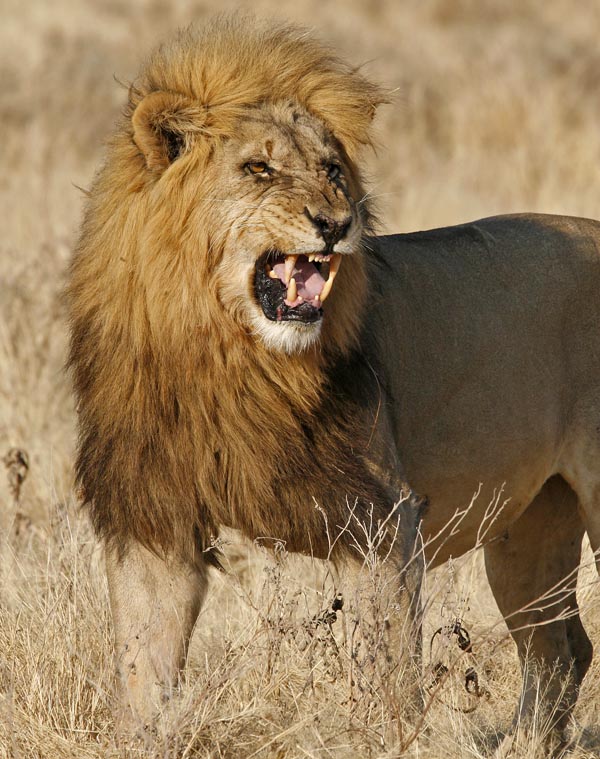
Namibia is one of the few African nations where a self-drive safari is possible with an excellent road system and a wide choice of accommodation to suit all budgets. This gives travellers the opportunity to choose their own companions, their own itinerary and their own pace of travel. Although 90% of the roads are gravel, and some are in better repair than others, all are perfectly driveable but distances are irrelevant, and Google Maps often underestimate travelling times, so make sure you ask an expert and plan accordingly.
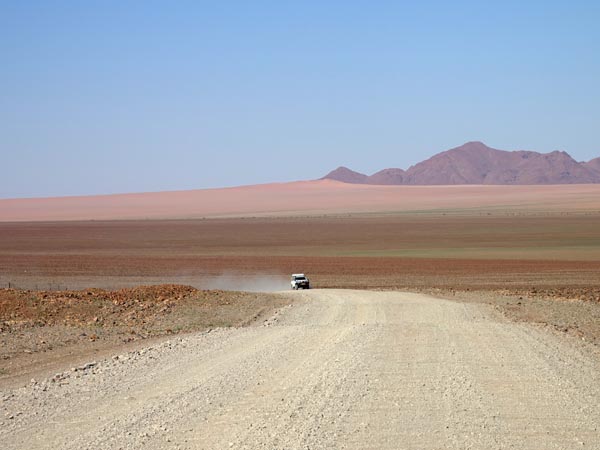
In addition to self-drive adventures, guided tours are available and can cater for large or small groups, with private tours and photographic tours becoming increasingly popular.
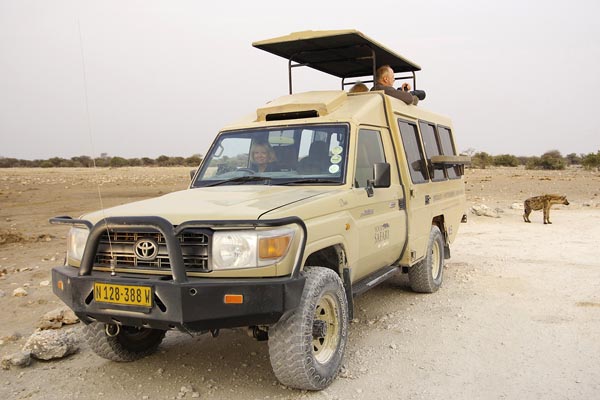
The southern deserted areas are a landscape photographer’s dream, with huge sand dunes, deep canyons and adapted wildlife. There are excellent opportunities of seeing gemsbok, springbok and ostrich in some numbers along with more unusual animals such as bat-eared foxes, cape foxes, meerkats, honey badgers and a true Namibian endemic—the dune lark.
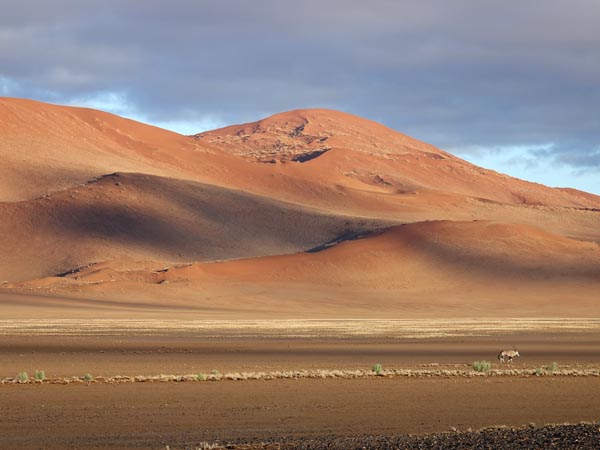
The Namibian coast, including the Skeleton Coast at over 975km long, has some of the richest seas in the world, dominated by the cold Benguela current. Here the rarely seen benguela, or Heaviside’s, dolphin can be found, and 850,000 Cape fur seals have made these waters their home. The elusive brown hyena, or strand loper, is the primary land-based carnivore, and black-backed jackals can be seen on almost all beaches.
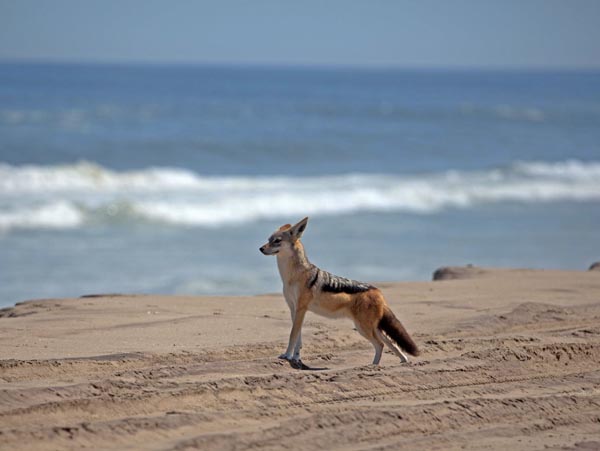
The desert wildlife is spectacular and a trip out into the Namib with a local expert will give you opportunities to experience some of the rare species that live here.
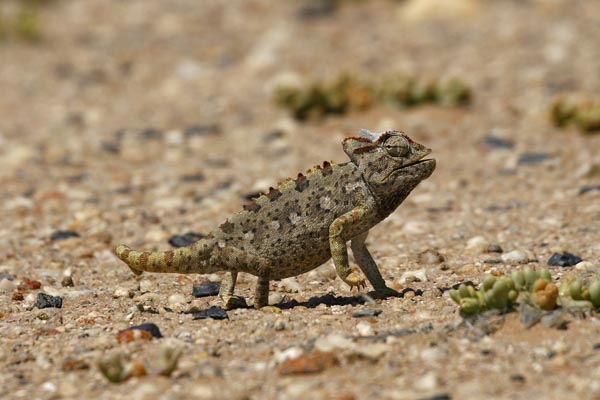
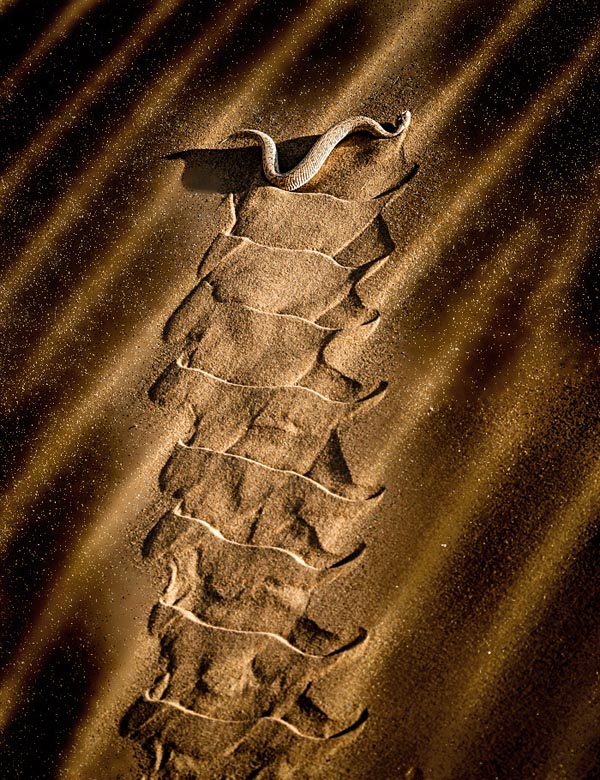
The area around Walvis Bay is a world-renowned birding hotspot with over 150 species recorded. Large flocks of lesser and greater flamingos are often found in the lagoon.
Up towards the Angolan border in the north west is the remote and beautiful Damaraland—home to Namibia’s fabled desert-adapted elephant, lion and black rhino. This is a wildlife rich area of free roaming animals including most of Namibia’s mammal species and some rarities such as the black mongoose.
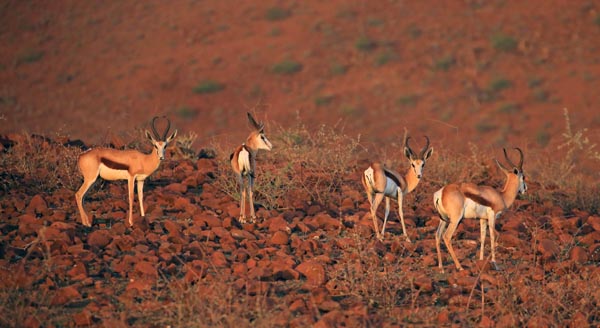
Further east lies Etosha National Park. Half the size of Switzerland and with a giant salt pan dominating two thirds of it, Etosha is unique as a wildlife destination in having no rivers or lakes so the animals rely totally on the spring-fed waterholes to survive. This gives excellent opportunities for people to quietly sit, watch and wait as the wildlife comes to them.
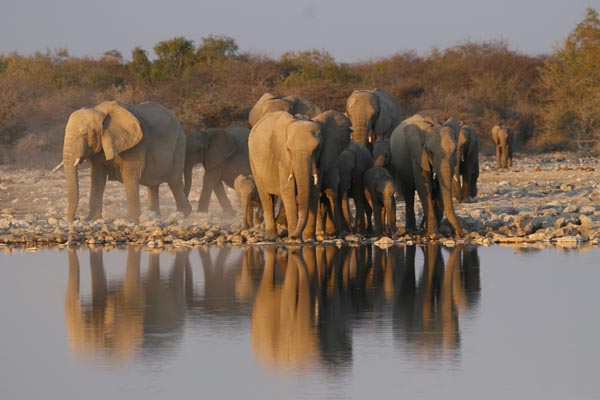
There are three main camps in the park, two satellite camps and over 65 waterholes for public viewing. The road system is particularly good and well-signposted. If you are on a self-drive safari, Etosha is a perfect destination.
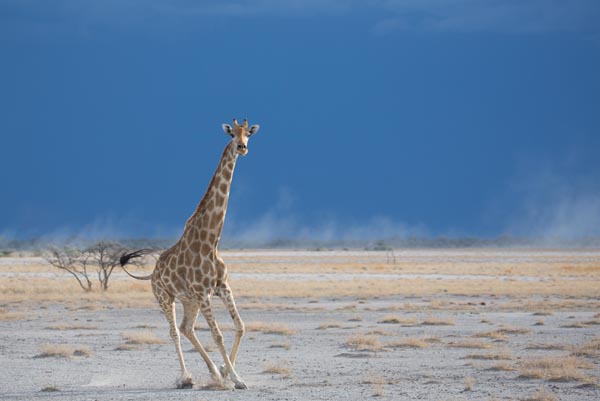
The western half of the park is dominated by dolomite hills and wide-open plains. It is the only area of the park where you can see baboons, Hartmann’s mountain zebra, and klipspringers, along with all of Etosha’s other species
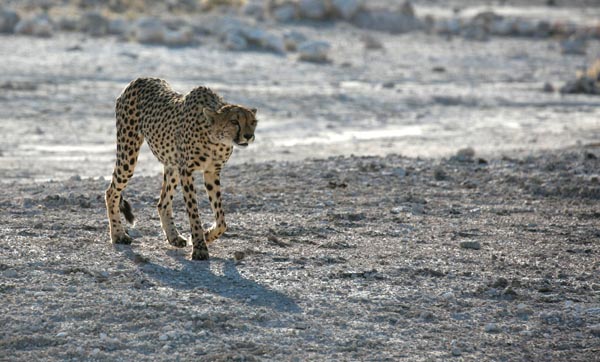
The central area around Okaukuejo has both vast grass plains and mopane woodlands. The camp’s floodlit waterhole is world renown with almost nightly visits by large herds of elephant and black rhino. Some people choose to just stay in camp as there is a constant parade of animals coming to drink. Vast, open plains where large herds of herbivores graze dominate the whole area.
The Okondeka waterhole on the pan’s edge is often frequented by one of the largest lion prides in the area. To the east of the camp are three further productive waterholes known for elephants, lion, leopard, spotted and brown hyena, zebra, gemsbok, springbok, wildebeest, ostrich and the occasional aardwolf. The open plains are also good for spotting larger birds of prey such as vultures, several eagle species and peregrine falcons.
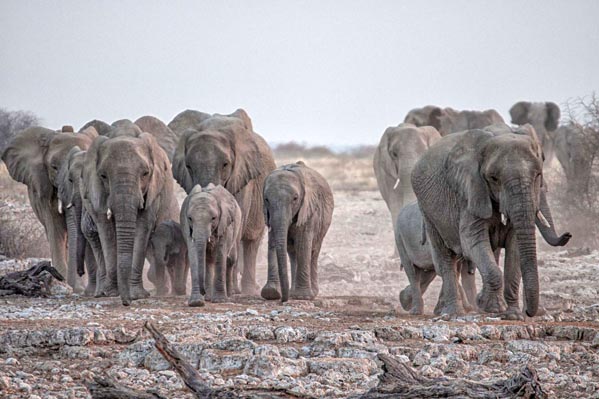
Halali is the camp that sits in the middle of the centrally wooded area of the park. This diverse sector has both mopani woodland and dry savannah that rolls down to the very edge of the giant salt pan.
The camp’s own floodlit waterholes are a delight. The viewing area looks down on the pool giving a real sense of theatre as animals come to drink. There are several waterholes near camp that are surrounded by trees and are frequented by woodland species such as red hartebeests, porcupine, honey badgers, black faced impala, kudu, eland as well as elephant, lion, leopard, zebra, oryx and giraffe. On the pan’s edge are several key waterholes that are home to large herds of zebra and springbok who are preyed on by several lion prides and cheetah.
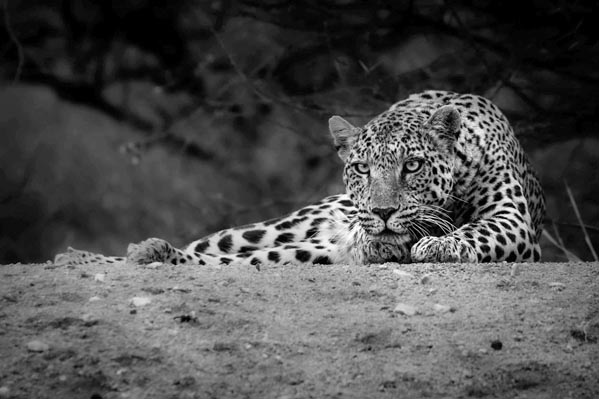
Further east lies Namutoni Camp and the wildlife-rich acacia woodland around Fischer’s Pan. Not only is this area home to some of Etosha’s largest lion prides, leopard sightings are also frequent. This area is home to the majority of the park’s giraffe. It is one of the best places in Africa to see the world’s smallest antelope, the diminutive damara dik-dik. Cheetah are often seen here hunting around the edges of the pan.
Within a few kilometres from camp are several excellent waterholes—two are productive all day. An enormous hyena clan is located near Chudop waterhole; the members are often seen returning to their den early in the morning. This is a good area for lion, hyena, leopard, cheetah, elephants, black rhino, damara dik-dik, all plains game, warthogs and mongooses. Flamingos and pelicans can be seen in Fischer’s Pan after the rains.
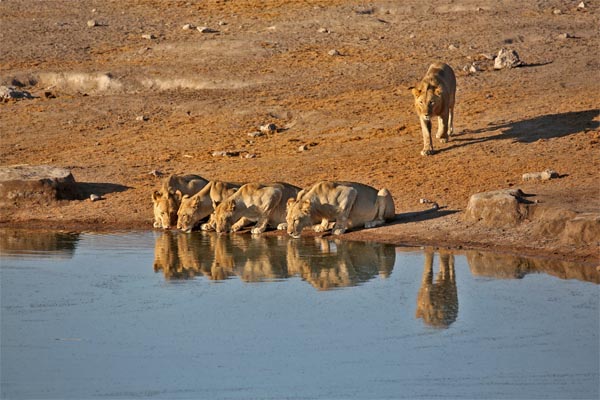
Leaving Etosha, which is always hard, you can head northeast to the Caprivi Strip and discover a very different Namibia. This thin strip of land is sandwiched between Angola in the north and Botswana in the south. This green, lush land is full of rivers and broad-leafed woodland, and is home to some of Africa’s more water dependent wildlife including hippos, buffalo, crocodiles, red lechwe and over 425 bird species. This is also one of the best places to see wild dogs in Namibia—a rare privilege.
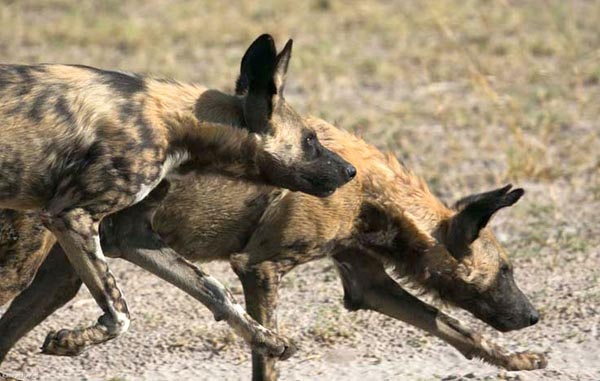
Namibia is a vast, sparsely populated country which boasts a wealth of amazing wildlife living wild and free in diverse and stunningly beautiful landscapes.
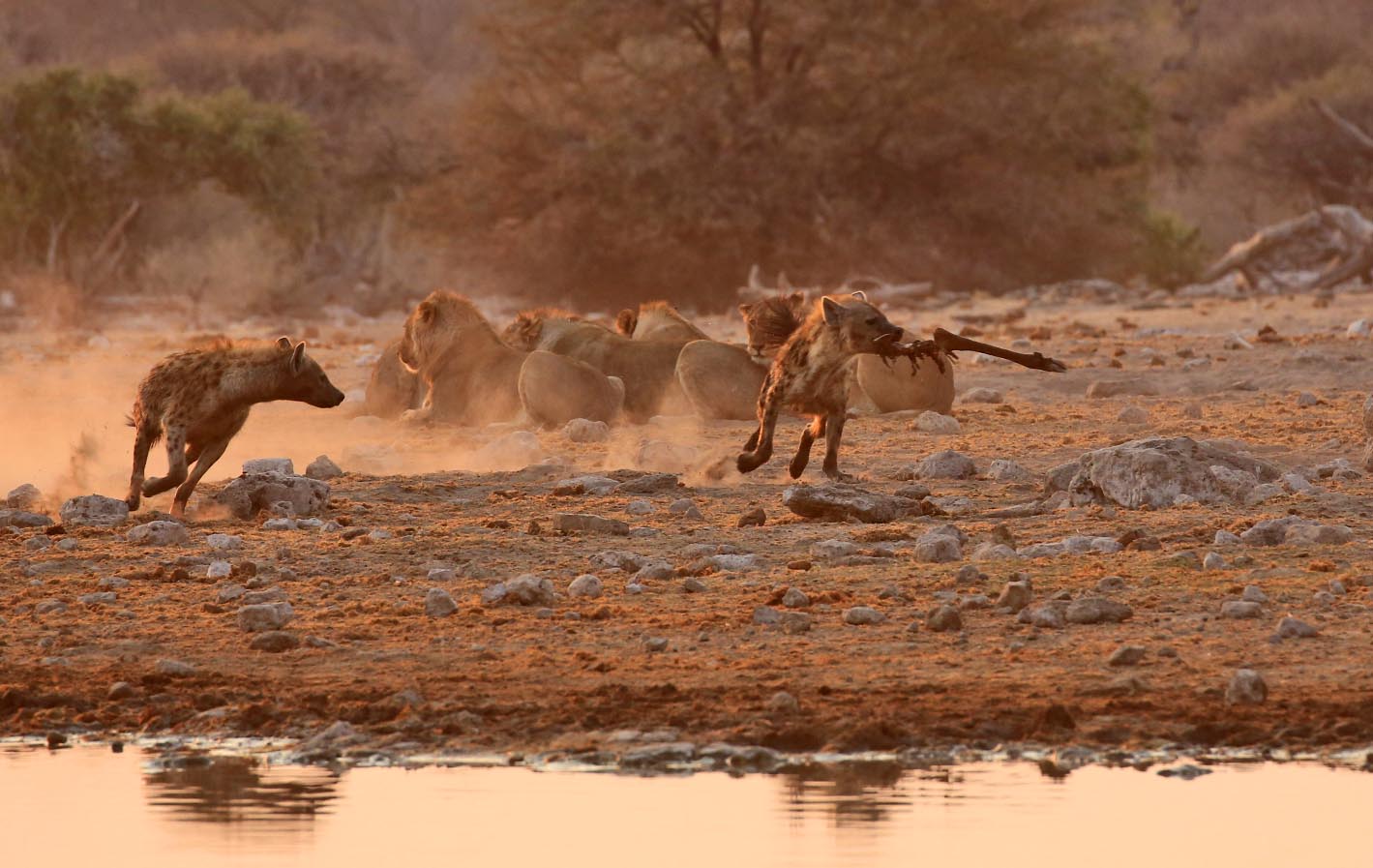
All photos by Kathyrn Haylett of Your Safari
Photos, in order as they appear:
Lion in central Etosha
Namib Rand
Specialist guided safari with Kathryn from Your Safari
Sossusvlei dunes
Black-backed jackal
Namaqua chameleon
Peringuey's adder
Springbok
Elephants in Etosha National Park
Giraffe in Etosha
Stalking cheetah in western Etosha
Elephants at Okaukuejo watering hole
Leopard in Etosha
Lions drinking in eastern Etosha
Wild dogs in Caprivi Strip
Hyenas vs. lions in Etosha
Has been on: 20 safaris
© Your African Safari Ltd, All rights reserved.
Your African Safari is a safari-planning and safari review site. It was created to help support a healthy African wildlife population. All reviews are vetted before being approved and only ethical tours are published